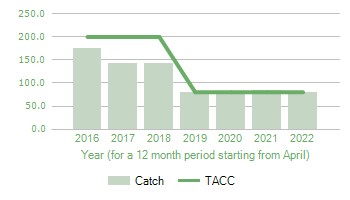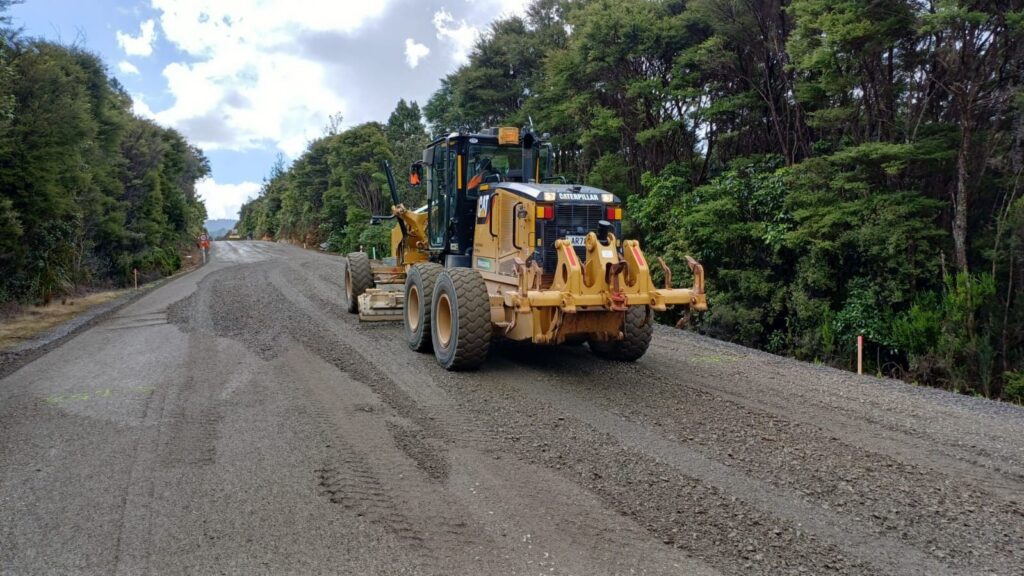Recreational Fish Stocks An Anglers View
Written by John Grant on July 9, 2022
This opinion piece has been written by Derrick Paull. He’s a former magazine writer and editor, Amateur Fishing guru and BBQ Pitmaster and on the executive committee of the New Zealand Angling & Casting Association.
Listen to an interview aired on Coromandel’s CFM on Thursday July 14th with Derrick:
We live in a world of misinformation and it’s really hard sometimes to know who or what to believe. The weather’s shit and I’ve got a few minutes, so I want to share my understanding of the current state of our fisheries from a rec advocate’s point of view after 15 years learning the lay of the land.
This is a long post and it’s my opinion, based on what I have learned from the scientists, published data and specialists in fisheries management.
I heard the term ‘Sustainable depletion’ a few years ago and it sticks in my mind as the best description of what fisheries managers with the commercial lobby diving them, are serving us up every year.
Colin Moyle, the Minister responsible for the introduction of the Quota Management System stated “Government’s position is clear, where a species of fish is not sufficiently abundant to support both commercial and non-commercial fishing, preference will be given to non-commercial fishing. This position reflects Government’s resolve to ensure all New Zealanders can enjoy and benefit from our fisheries”. Please never forget this.
First up, there is great data on how much fish, crays and shellfish kiwis take, but most of the data is focussed around the North Is. We love catching snapper and it’s or number one species but numbers and weight. This is important for a few reasons, but I’ll come back to that. The data has been collected by NIWA mostly with some others like Bluewater research taking on other projects. NIWA ramp surveys count actual fish on a given day, at a location, they then combine that data over the year with cameras at boat ramps and aerial flyovers counting the numbers of vessels fishing.
In one short period the data doesn’t offer much certainty, but over the now 10years plus the time scale of these interactions allows for a clearer vision of the fish being taken.
At a national level the Ministry takes a long-term look at engagement – who fishes, how often, for what and when. It gives a bigger picture view of how kiwi’s fish, rather than just what they catch.
The last national survey finished in 2018 and showed kiwis are doing less fishing, not more and are in generally catching fewer fish that the last survey (2011)
https://www.mpi.govt.nz/…/new-survey-measures…/
The above link has a summary of this data. However the wording on the front page is deceptive – Saying the rec take of snapper “almost tripling in the last 30 years” is misleading as the peak was 2011 and as then noted, “trending down since the last survey in 2012” to where we are today. 2 million trips were made across NZ by approx. 600,000 people. That’s a staggeringly low number and as also noted, it’s in decline.
So what does this mean and why is it important enough for me to bore you all with this diatribe?
Well, the biggest changes are the mix of species being landed by kiwi’s. While we love our snapper and make sure there’s plenty of them (through various formal lobbies and indirect comms to Ministry), the other species we used to land are in genuine steep decline and we’re just not fighting hard enough for them. In the 1960s through 80’s the snapper, trevally, kahawai and kingfish/haku populations were smashed by hyper-effective commercial methods. We’ve focussed on rebuilding these fisheries and there’s generally improvements. However, there’s about 15 other species that have continued to decline, in particular gurnard, john dory, tarakihi, crayfish/lobster, hapuku, bass, bluenose, flounder – all of which are demonstrably harder to catch now than 10 or 15 years ago.
By focussing on snapper (and to a lesser extent haku and kahawai) we’re creating a monoculture ecosystem similar to the cow/sheep farms that make up 90% of our agriculture on land.
Snapper are the dominant species in the North and they’re re-distributing to the south again as the populations grow and spread. While it’s nice t have this growth – we do not want to lose them, it’s the lack of diversity when we focus on them as a sole species that’s the real issue.
Here’s a few horror stories you don’t really hear about and can’t clearly recognize until its too late.
Bluenose
In 1992 or so the Ministry of Fisheries accepted a proposal form industry called an Adaptive Management Programme from industry to effectively smash the Bluenose population in an effort to test its resilience and, in their spin, get a better gauge of the population size, diversity and bio-mass so they could get a bigger bite of the Bluenose pie. The nett result was a fishery where commercial catch was doubled and subsequently collapsed to where we are today.
https://fs.fish.govt.nz/Doc/24071/12_BNS_2016_FINAL.pdf.ashx
Bluenose are now *generally smaller when caught, fewer in number and generally inaccessible to the rec population. We have, as a sector, taken a bag limit decrease (reasonable give the circumstances). Not because rec fishers have caused a decline, but because now they’re smashed, it’s the right thing to do
Hapuku and Bass are similar, but the decline has been more gradual. They’re more susceptible to localised depletion, but also tend to re-populate inshore reefs as they mature. The issue with this fishery is the commercial sector has been pushing the stocks further & further. They’re still catching *similar numbers, but the effort and miles to catch them increases every year. Again, the numbers available to recs are on an ever-decreasing decline. Yes, local reefs can definitely be stripped by recs, but the stocks that used to re-populated them are gone or going now. The size and stability these fisheries are virtually unknown. In MPI’s own words:
“It is not known if current catches or the TACCs are sustainable or at levels that will allow the stocks to move towards a size that will support the maximum sustainable yield.”
https://fs.fish.govt.nz/Doc/23832/30_HPB_2015_FINAL.pdf.ashx
John Dory – In decline since the 1980’s – in most fisheries they are unable to catch their quota annually.
MPI do not know how big stocks are “Estimates of absolute current and reference biomass are not available. John dory is principally a bycatch species and, as such, estimates of MCY based on catch statistics are uncertain. Under such conditions it is difficult to determine whether changes in the reported catches indicate actual changes in the stocks or simply changes in the catches of the target species.”
https://fs.fish.govt.nz/Doc/21737/40_JDO_09.pdf.ashx
Gurnard – One of the favourite table fish for kiwis and formerly a very productive fishery.
Again, massively under-catch by commercial and no real knowledge of stock size, despite dropping rec and commercial take.
“Estimates of current and reference absolute biomass are not available for any gurnard stock. Estimates of current and reference biomass were available for GUR 1W and GUR 1E after the 1997–98 stock assessment, but can no longer be considered current and in 2008 the Northern Inshore Finfish Working Group (NINSWG) recommended that this assessment be revisited.”
Gurnard are considered a ‘by-catch’ species – that means they’re not specifically targeted but sadly they’re taken in high numbers when other species are being fished for. The allowances for gurnard, based on literally made-up figures are stupidly high and there is no stock assessment data to support ongoing high catch rates. The net effect is less gurnard in the water and no one caring what the status of the stock is. There were some highlights in this report, but it’s now 13 years old and anecdotal evidence shows a steep decline in the northern (GUR1) fishery.
https://fs.fish.govt.nz/Doc/21775/77_GUR_09.pdf.ashx
Crayfish/Rock Lobster CRA2 – Bay of Plenty Probably the worst managed fishery in Aotearoa NZ fisheries, and the best example of why quota holders should not be allowed to self manage fisheries.
https://fs.fish.govt.nz/…/2008%20FARs/08_11_FAR.pdf.ashx
This fishery has been in steep decline since around 2010 with the effort to catch each cray approx. tripling in the ensuing 10 years. The fishery is so hammered the crays that are left are referred to by scientists as ‘functionally extinct’. Commercial industry and their lobbyists like to pain recs as the cause of this decline but, as noted below, we have a very clear picture of rec take and like with snapper, a long time scale for this estimate to be bult and proven on. https://fs.fish.govt.nz/Page.aspx?pk=8&tk=41&ey=2023
The biggest *likely outcome of reduced crayfish numbers is their ability to keep kina numbers under control. I am not aware of any firm data yet to support my theory, so please forgive me for this, but I think it’s pretty valid and will likely be demonstrated in future work.
We’re often told snapper numbers in decline is the (or a) prime reason for kina increases and the phenomenon of ‘kina barrens’, however as most fishers will tell you, snapper numbers are increasing and there’s no shortage of big, kina munching snapper. What is missing is cray fish.
I’m 100% behind eco-system rebuild and the maximising of large snapper to bolster the breeding population. Whether you believe it’s fact that big snapper breed big/strong progeny is up to you, but it’s hard not to want more big fish in the water. What this line of thinking is doing though is taking our eye off the lobster situation and possibly erroneously getting us talking about snapper again.
Crayfish are a valuable export fishery – $4,400,000 a year approx. at $55/kg export price – but is that value matched by the damage being done to our reefs?
Let’s be really honest with ourselves. We are better to stop all crayfish extraction for 5 – 10 years and let them actually recover rather than cutting them down every time they start to flourish. I get that this would be ridiculous to some, but when it comes to our environment, we need to hurt a few feelings to ensure a healthy future.
Scallops
I’m not even sure I can go here. Writing this now, I wonder if in fact scallops are a worse managed fishery than crays!
In 2010 we discovered a new ‘mother-bed’ of scallops in the Hauraki Gulf. As a rec advocate I was involved in submissions that literally said (I am paraphrasing) ‘Please don’t hammer it, this is probably the source of the recruitment every year.
Sadly the commercial lobby got the ministry on side, the fishery was quadrupled and in 4 years the new fishery was collapsed and as predicted the recruitment across the rest of the fishery collapsed with it to the extent now we have virtually no access to scallops.
The incredible ignorance and arrogance of quota owners, seen clearly in hindsight, destroyed this important recreational fishery.
Check the NZ Sport Fishing Council submission here form 2010. https://www.nzsportfishing.co.nz/…/CoroSCA-NZSFC…They knew then what was going to happen.
Commercial scallop fishing uses heavy metal dredges to clear the seafloor and scoop up scallops. Probably the most destructive fishing method we use and well outdated. Every time they scrape over the sea-floor they’re re-suspending silt and particulate back into the water and smashing every other marine animal and plant in it’s path.
I have zero tolerance for scallop dredging -it’s a no brainer this should be banned immediately! Thankfully NIWA and others are working on smart harvesting systems (AI recognition of scallops to mechanically ‘hand-pick’ them. Fingers crossed for success there!
So why is this important?
Well to me and others with an eye on what’s happening it’s becoming evident that the most destructive element of commercial catch is likely to be ejected from the Hauraki Gulf in the near future.
As the largest rec fishing area in the country this has some real benefit to us as we *should see a continued increase in all biomasses and especially Snapper, Kahawai and Haku – (and possibly Trevally). But outside the Gulf the species above are likely to be fished harder and the pressure increased on declining stocks. Crayfish though, they’ll still be taken commercially as the impact of the method used is ‘minimal’. Let’s work on a real change in how crayfish are managed so their decline doesn’t affect our reefs so badly.
As responsible guardians / kai tiaki we need to ensure our fisheries remain abundant and diverse. We, the fishing community need to keep pushing for better practices from both commercial and ministry. There’s been a huge shift by rec fishers but we also need to do more.
Own a scallop dredge? Please throw it away. Don’t be part of the problem.
If we’re smart, we can save our inshore fisheries for our future generations. If you don’t want to worry about it yourself, sign up to someone LegaSea (www.legasea.co.nz) and help them do the legwork.
I have no doubt this thread will fill with hate and the negative comments – but if you’re going to disagree, please do it with some facts and data – show me the info, not your reckons.
I have not included every piece of data out there and I’ve tried to clarify if something is my opinion, please do the same.
Image below – crayfish CPUE graph







